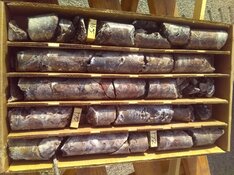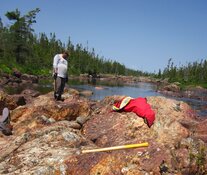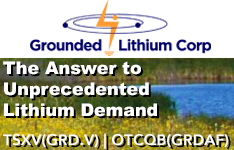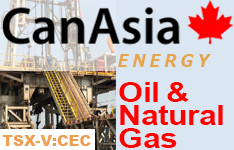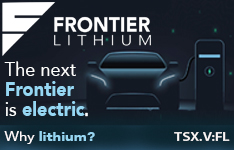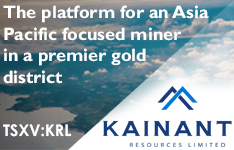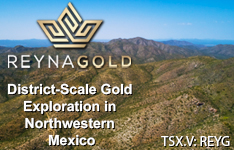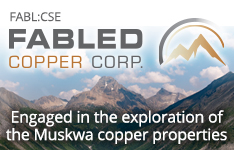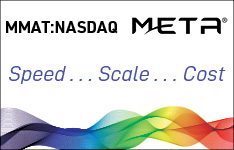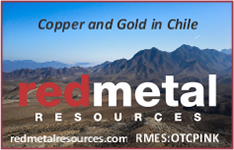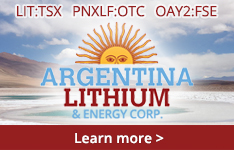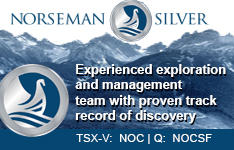Last week demonstrated clearly that things break when interest rates are aggressively increased after a long period of excessively loose monetary policy. And we saw the reaction of the Federal Reserve and other central banks (notably, the Swiss National Bank and Bank of England) to the issue, namely to ease again. In a matter of minutes, the Fed reversed nearly half of all the (meager) tightening it had achieved over the past year. Since the Fed announced its plans to reduce its balance sheet a year ago, the balance sheet has shrunk from nearly US$9 trillion to just over US$8.3 trillion, just over 7%.
This lagged the Fed’s own announced schedule, which itself was inadequate; the balance sheet had increased from US$3.7 trillion in September 2019. Now, in one fell swoop, the Fed has added nearly US$300 billion, reversing almost half of the year’s reduction.
It is already clear that the economy is heading into a recession. Add instability in the financial system and new Quantitative Easing from central banks, and we have the perfect recipe for higher gold prices.
Short-Term Pullback Almost Certain
In the immediate term, however, we should expect a pullback. Gold had moved nearly US$200 in the past eight trading days, an unsustainable pace and making it vulnerable to a pullback.
The bailout of the slow train wreck that was Credit Suisse is already seeing gold trade lower overnight in Asia, while there is a possibility of a rescue of First Republic and other regional banks in the U.S. (by Warren Buffett?).
The Fed meets this week and, on Wednesday, is likely to increase rates again by 0.25%. Chairman Powell, in his post-meeting press conference, could make hawkish comments on inflation, and that would be sufficient to see gold retreat further.
Recession, Instability, and More QE
This is all short-term, however. The horse has bolted the barn and is galloping across the field. The damage that has already been done by the aggressive rate hikes that have already occurred–from zero lower bound to 4.5% so far over one year is the most aggressive rate hiking ever–is yet to be fully revealed, and we know now how the central banks will respond.
It is inconceivable that we have now seen all the damage in the financial system (not only banks but insurance companies and pension funds, perhaps). Use any pullback to add to gold positions. Because of the probability of a pullback, however, we are waiting to buy after the strong moves of the last couple of weeks.
Franco Nevada Sees New Financial Records
Franco-Nevada Corp. (FNV:TSX; FNV:NYSE) reported a strong fourth quarter, ahead of guidance and expectations, for a record year, driven by higher oil revenues off higher prices; the precious metals saw slightly lower production, largely because of shortfalls from Cobre Panama, because of the timing of deliveries, Stillwater and Antamina.
(This quarter will also be down for Cobre Panama because of the recent stoppage). Though the fourth quarter saw slightly higher GEOs, revenue was lower because of precious metals prices.
For the year, total Gold Equivalent Ounces ("GEOs"), including oil, came in at the top end of guidance. Costs were slightly down, with G&A costs less than 3% of revenue.
Modest Growth Forecast
This year, the company expects GEOs to be consistent with last year, with a smaller contribution from oil. Based on the company’s price assumptions, oil volumes were translated into a few GEOs. There are three new mines coming onstream during the year, which will boost results in the second half, though Antamina and Candelaria are expected to produce less.
The first half is always lower than the second half, about 55/45. This year could be a little more lopsided, with the company expecting a softer first quarter due
to stoppages at Antapaccay, Stillwater, and Cobre Panama, which were all temporarily shut down during the quarter the different reasons.
For the next five years, the company is expecting energy revenues to show a slight increase over the past five years, while metals other than precious metals are also expected to increase a little, largely due to an expansion from Vale’s Brazil iron ore mines.
Gold will see growth from an expansion at Cobre Panama and major new mines, Tocantinzinho and Hardrock, among others. In all, the company is expecting total GEOs in the range of 760,000 to 820,000 ounces, up from 730,000 last year. In my view, this is likely to prove a conservative estimate.
Franco Looks To Add More Gold Assets
With energy revenues now about 20% of the total, the company is spending more time looking for new gold assets. It does not want to add energy above 20%, though it could go above that if the oil price moves, and it could buy more if it falls below 20%.
CEO Paul Brink, however, said that that is "not a bright line in the sand." The preference for new assets, however, remains gold, though the company will also look at great assets in other metals.
It is also prepared to undertake total financing packages, including debt and equity, as it did with G Mining at Tocantinzinho, in order to get the stream done. It also will continue with smaller purchases. In February, it added a portfolio of five primarily gold royalties on Australian assets for US$16 million.
Franco ended the year with US$1.2 billion in cash, no debt, and US$1 billion available on its credit facility, putting it in an excellent position for any new asset purchases. The stock has moved strongly from under US$125 late last month, both on the Cobre Panama agreement and the recent move in gold. It remains a core holding, though we would wait before buying more.
Fortuna Makes Impairments at Three Mines, but Operations Strong
Fortuna Silver Mines Inc. (FSM:NYSE; FVI:TSX; FVI:BVL; F4S:FSE) reported the day after our last report, with the fourth quarter in line and the full year slightly ahead. Production with within guidance, while costs were also within guidance at all mines except Lindero.
The most significant news was US$160 million impairment charges taken at three mines: Yaramoko, due to lower reserves; Lindero, because of higher costs; and San Jose, where exploration is not replacing depletion and because of lower grades at the new vein.
The company expects to update reserves in the coming weeks.
Separately, at San Jose, Fortuna said it could be 18 months to two years before the Supreme Court rules on the Mexican environmental agency’s ruling. This follows a permanent injunction allowing the company to continue mining pending the final ruling.
The impairments were a shock to the market, though operations at all mines are now on track, and the company is famously conservative. The stock recovered on Friday with the metals’ prices. Hold and buy on any pullback.
New Interest in Vista’s MT Todd on Flexible Project Plan
Vista Gold Corp. (VGZ:NYSE.MKT; VGZ:TSX) said that the results of a study on the possibility of a smaller-scale project at Mt Todd (see Bulletin #848) showed a smaller and easier-to-build initial phase that was "viable and economically attractive." Significantly, initial capex could be less than US$350 million, as opposed to US$892 million in last year’s feasibility study, though annual production would be lower and costs higher.
Still, annual production would be in the range of 150,000 to 200,000 ounces per year, and operating costs "would remain competitive in today’s environment." Importantly, the new study shows a flexible project, meaning a company could build a mine larger than the new streamlined model and significantly preserve the optionality to expand at a later stage.
The smaller project with a lower capex has reinvigorated the process of looking for a partner. CEO Fred Earnest said that there had been "a significant uptick in interest" both from companies that had already looked at the project before but been put off by the large capex, and from new companies, with several new confidentiality agreements signed.
The data room is active, he said.
Reduced Costs May Not Be Sufficient
The company made a determined effort to reduce costs last year, with recurring costs 15% below plan; it aims to reduce further by another 7% this year. The total holding cost for the project comes to about US$0.80 per ounce of reserves, which is considered a very good holding cost.
It ended the year with US$8.1 million in cash and no debt. The company has done an admirable job over the past few years selling non-core assets to minimize equity dilution, but now, its used mill is the only such asset remaining that Vista could sell, with projected proceeds now in the US$5 million range.
It remains for sale. With costs projected at about US$5.5 million this year, the company will clearly need to raise more funds in a year or so, absent the mine sale or a transaction. An additional equity raise without a transaction would be a negative in the market.
The company plans to reduce the size of its board from seven to five members through the retirement of two long-standing directors, including Mike Richings, former CEO and currently chairman. Richings spearheaded the acquisition of Mt Todd, as well as the spinout of the Nevada assets and the consolidation of its Idaho projects to form Midas Gold.
These latter initiatives provided the basis for some of Vista’s important asset sales and revenue generation. We will be sorry to see Mr. Richings leave, given his long association with the project.
Largest Shareholder Turns Activist?
Separately, the largest shareholder, Sun Valley, which holds a little over 17% of the shares, filed a 13D report with the SEC. This filing is intended for activist investors–-it had previously filed the 13G report for passive investors — and said in the filing that it seeks further conversations with Vista’s management and board "regarding possible ways to enhance shareholder value, potentially including . . . strategy and the composition of the board."
It added that there was no "present plan or proposal," and it has made no additional comment. It did state that it may talk with other large shareholders. CEO Earnest said that while Vista and Sun Valley had had ongoing conversations, there had been no discussions since the filing of the 13D report.
Sun Valley has a very positive view on the future gold price and is known to favor so-called optionality plays, whereby reserves are left in the ground pending higher prices.
Lastly, the company announced the results of a recent exploration program, which returned "excellent anomalous gold assays" from surface sampling. The company is not planning any further drilling, though it continues some grassroots exploration on land contiguous to its mining license area. The belief is that the mineral resource could be larger than the current known resource.
Value Is Clear, but How To Realize It?
There is no question that the value of Mt. Todd is a multiple of the market cap of Vista. The question is how to release that value without excessive dilution. The new study showing a smaller project can be viable is a very strong move toward finding an acquirer or partner.
A transaction could be structured whereby a company acquired the project based on the smaller mine plan, but Vista shareholders retained an option exercisable on certain longer-term production hurdles. We have seen this before with the sale of certain assets (such as Pan American’s acquisition of Tahoe and its Escobal project). An unknown is Sun Valley’s intentions.
After a 10% stock price move in the last week, we would hold and look to buy on lower prices.
TOP BUYS this week: we are buying little now, expecting a pullback in gold, and cautious on the broad market, which remains vulnerable. Best buys include Lara Exploration Ltd. (LRA:TSX.V); Ares Capital Corp. (ARCC:NASDAQ); and Orogen Royalties Inc. (OGN:TSX.V).
ERRATA I mentioned last week in my write-up on Altius Minerals Corp. (ALS:TSX.V) that the IPO of its 10% owned Lithium Royalty Corp was underway. In fact, it went public a week ago, the first IPO on the Toronto Stock Exchange in nearly a year.
In addition to its equity stake, Altius holds royalties on some of the assets. Also, the last bulletin was incorrectly numbered. It should have been #854, while the last two bulletins were incorrectly numbered in the attachments. (They are now correct on the website.) Apologies if this caused any confusion.
PHYSICIAN, HEAL THYSELF Barney Frank, co-author of the notorious Dodd-Frank regulatory Act, was a director of the failed Signature Bank. Like most politicians, he is very good at telling other people what they should be doing but not very doing at doing it himself.
"We will only break the rules for some of you," said Treasury Secretary Janet Yellen in a Senate testimony last week.
You may have seen a video of Yellen telling Congress that the savings of ordinary Americans in small banks will not receive the same treatment as those of the wealthy or politically well-connected on the coasts.
Although all banks will be required to pay more into the FDIC pot to pay for the bailout of Silicon Valley and Signature Bank depositors, not all bank depositors will receive similarly favorable treatment above the FDIC’s stated US$250,000 limit. During the grilling from Oklahoma Senator James Lankford, she became increasingly uncomfortable, as well as she might have. It is well past time for her to step down.
Want to be the first to know about interesting Gold and Oil & Gas - Exploration & Production investment ideas? Sign up to receive the FREE Streetwise Reports' newsletter.
Subscribe
Adrian Day Disclosures:
Adrian Day’s Global Analyst is distributed for $990 per year by Investment Consultants International, Ltd., P.O. Box 6644, Annapolis, MD 21401. (410) 224-8885. www.AdrianDayGlobalAnalyst.com. Publisher: Adrian Day. Owner: Investment Consultants International, Ltd. Staff may have positions in securities discussed herein. Adrian Day is also President of Global Strategic Management (GSM), a registered investment advisor, and a separate company from this service. In his capacity as GSM president, Adrian Day may be buying or selling for clients securities recommended herein concurrently, before or after recommendations herein, and may be acting for clients in a manner contrary to recommendations herein. This is not a solicitation for GSM. Views herein are the editor’s opinion and not fact. All information is believed to be correct, but its accuracy cannot be guaranteed. The owner and editor are not responsible for errors and omissions. © 2022. Adrian Day’s Global Analyst. Information and advice herein are intended purely for the subscriber’s own account. Under no circumstances may any part of a Global Analyst e-mail be copied or distributed without prior written permission of the editor. Given the nature of this service, we will pursue any violations aggressively.
Disclosures:
1) Adrian Day: I, or members of my immediate household or family, own securities of the following companies mentioned in this article: All. I personally am, or members of my immediate household or family are, paid by the following companies mentioned in this article: None. My company has a financial relationship with the following companies mentioned in this article: None. Funds controlled by Adrian Day Asset Management, which is unaffiliated with Adrian Day’s newsletter, hold shares of the following companies mentioned in this article: All. I determined which companies would be included in this article based on my research and understanding of the sector.
2) The following companies mentioned in this article are billboard sponsors of Streetwise Reports: None. Click here for important disclosures about sponsor fees. The information provided above is for informational purposes only and is not a recommendation to buy or sell any security.
3) Statements and opinions expressed are the opinions of the author and not of Streetwise Reports or its officers. The author is wholly responsible for the validity of the statements. The author was not paid by Streetwise Reports for this article. Streetwise Reports was not paid by the author to publish or syndicate this article. Streetwise Reports requires contributing authors to disclose any shareholdings in, or economic relationships with, companies that they write about. Streetwise Reports relies upon the authors to accurately provide this information and Streetwise Reports has no means of verifying its accuracy.
4) This article does not constitute investment advice. Each reader is encouraged to consult with his or her individual financial professional and any action a reader takes as a result of information presented here is his or her own responsibility. By opening this page, each reader accepts and agrees to Streetwise Reports' terms of use and full legal disclaimer. This article is not a solicitation for investment. Streetwise Reports does not render general or specific investment advice and the information on Streetwise Reports should not be considered a recommendation to buy or sell any security. Streetwise Reports does not endorse or recommend the business, products, services, or securities of any company mentioned on Streetwise Reports.
5) From time to time, Streetwise Reports LLC and its directors, officers, employees, or members of their families, as well as persons interviewed for articles and interviews on the site, may have a long or short position in the securities mentioned. Directors, officers, employees, or members of their immediate families are prohibited from making purchases and/or sales of those securities in the open market or otherwise from the time of the decision to publish an article until three business days after the publication of the article. The foregoing prohibition does not apply to articles that in substance only restate previously published company release.





